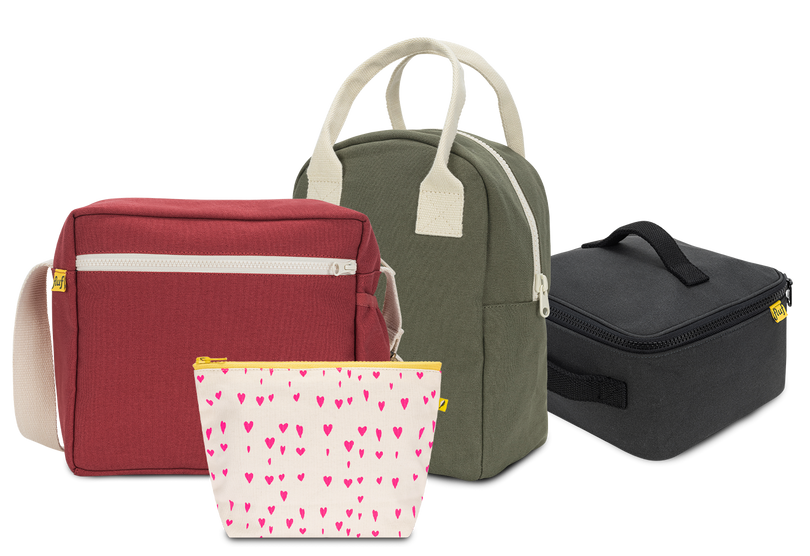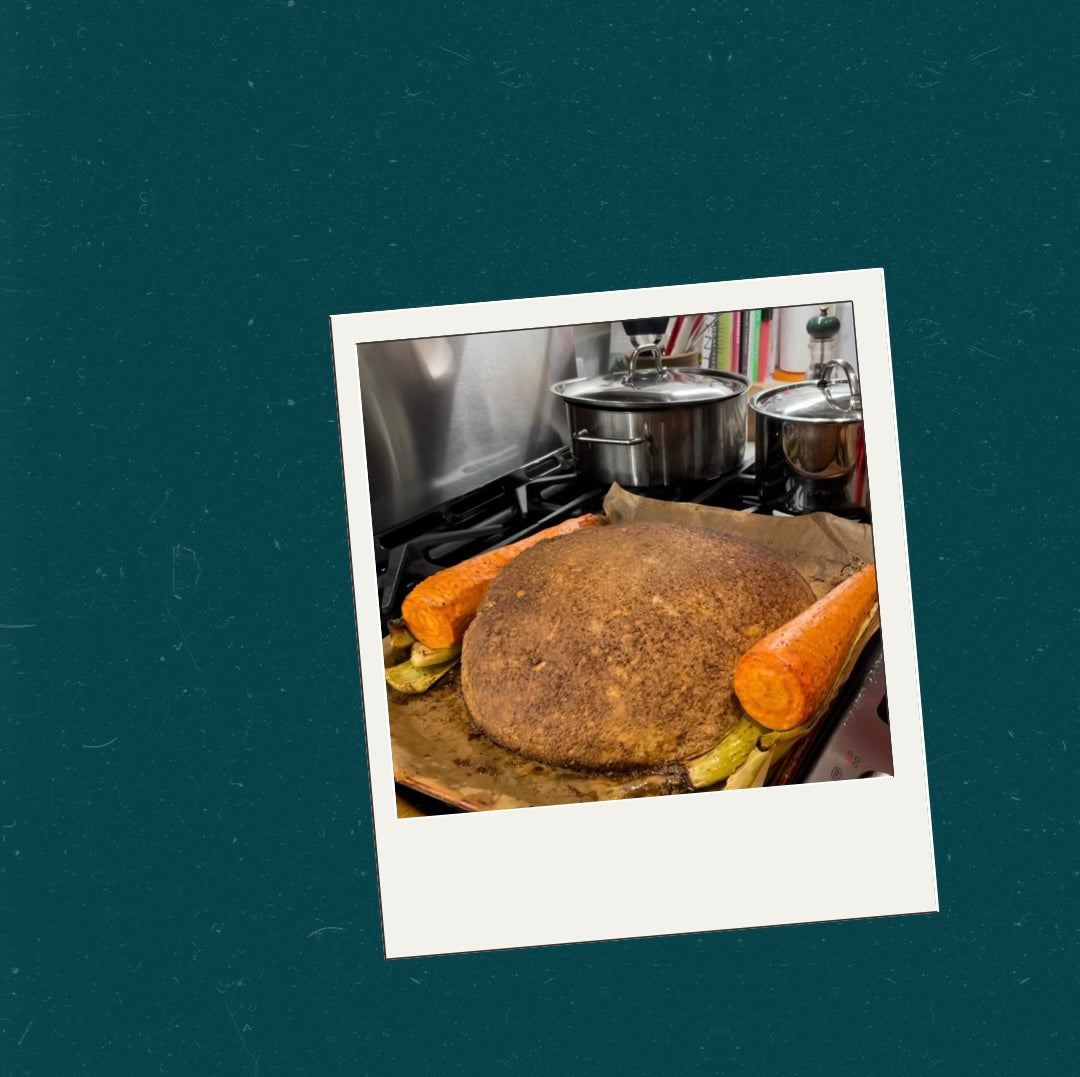Déchets d'Halloween : démystification et solutions simples pour une célébration écologique
Nous étions ravis de partager avec vous quelques astuces effrayantes pour un Halloween écologique cette année, mais nous avons découvert qu’Internet regorgeait déjà de conseils sur la façon de passer au vert. En fait, les astuces pour un Halloween plus écologique sont presque aussi nombreuses que les montagnes de citrouilles jetées le 1er novembre.
Ce qui nous a amené à nous demander : avec tous les conseils bien intentionnés sur la façon de rendre votre Halloween plus écologique, pourquoi est-il en grande partie ignoré ?
Alors, aujourd'hui, nous démasquons la vérité effrayante sur le problème écologique d'Halloween, pourquoi il est difficile de se débarrasser des déchets et quelques échanges faciles qui feront une énorme différence.
La vérité effrayante : ne détournez pas le regard
Pour planter le décor, voici quelques statistiques effrayantes sur les déchets d’Halloween des dernières années aux États-Unis, au Canada et au Royaume-Uni :
- Costumes jetables : Plus de 83 % des costumes d'Halloween sont portés une seule fois (!) puis jetés, ce qui fait que des millions de costumes synthétiques à base de plastique inondent les décharges chaque novembre. Une étude britannique a estimé que les costumes jetés équivalaient à 83 millions de bouteilles en plastique en termes d'impact environnemental, chaque année.

- Déchets de citrouilles : aux États-Unis seulement, environ 2 milliards de livres de citrouilles sont cultivées chaque année sur 66 000 acres (environ 50 000 terrains de football), dont plus de la moitié est utilisée uniquement pour la décoration et finit dans des décharges après Halloween. Au Canada, sur les 25 millions de citrouilles cultivées chaque année, le sort est le même.
-
Bien pire que le CO2 : dans les décharges, les citrouilles en décomposition produisent du méthane, un gaz à effet de serre 25 fois plus puissant que le dioxyde de carbone. Une année de déchets de citrouilles d'Halloween pourrait libérer près de 108 millions de livres de méthane , soit l'équivalent de la combustion d'environ 132 millions de livres de charbon !
-
Pas si sucré que ça : les Nord-Américains dépensent environ 3,5 milliards de dollars pour plus de 318 millions de kilos de bonbons , et la quasi-totalité de ces derniers sont emballés dans du plastique non recyclable. Cela représente beaucoup d'emballages qui finissent dans des décharges !
- Pas de fête pour la planète : 83 % des fournitures de fête d'Halloween, des assiettes en carton aux gobelets en plastique, sont des articles à usage unique qui sont jetés après une seule utilisation. Toutes les décorations d'Halloween lumineuses et énergivores contribuent également à un gaspillage d'énergie inutile.
Malgré la sensibilisation, les déchets d’Halloween augmentent chaque année.
Alors, pourquoi ne sommes-nous pas effrayés et ne pas agir ?
-
La complexité du changement climatique : La science climatique peut être aussi effrayante qu’un film d’horreur des années 80. Avec des termes comme « séquestration du carbone » et « émissions de méthane », il est facile de se sentir dépassé et impuissant quant à la manière de commencer. De plus, les gens se demandent souvent si de petites actions, comme le recyclage des emballages de bonbons ou l’achat de costumes d’occasion, permettront de résoudre les problèmes climatiques plus vastes. Ce sentiment d’impuissance peut conduire au « fatalisme climatique », où nous nous sentons condamnés quoi que nous fassions, ce qui nous pousse à nous en tenir à nos habitudes au lieu d’opter pour des choix plus écologiques.
-
Attachement culturel : Les traditions d'Halloween sont profondément ancrées. Pour beaucoup, suggérer un Halloween « plus vert » revient à dire adieu au plaisir de la fête. Après tout, Halloween n'est-il pas avant tout une fête de la nature ? la magie ludique, Des excès de bonbons, des manigances nocturnes et des décorations extravagantes ? L'idée de réduire le nombre de costumes ou de fabriquer des décorations à partir de feuilles de maïs peut sembler, euh, ennuyeuse.
- Motivation de style de vie : Honnêtement, qui a le temps ? L'idée de trouver des décorations d'Halloween durables ou de fabriquer soi-même un costume peut sembler être une tâche fastidieuse, une tâche de plus sur une liste déjà interminable. La plupart d'entre nous souhaitent simplement qu'Halloween soit une évasion facile et amusante, et non un projet éco-responsable. Il existe une croyance commune selon laquelle un Halloween plus écologique nécessite des efforts supplémentaires et n'a pas le même éclat que les célébrations traditionnelles.
Mais nous allons démystifier certains de ces mythes effrayants. Même quelques ajustements simples peuvent réduire le gaspillage sans perturber votre plaisir. C'est promis.

Mythes écologiques effrayants sur Halloween – Démystifiés !
Mythe n°1 : « Des friandises écologiques ? Attendez-vous à des bâtonnets de carottes tristes et des raisins secs poussiéreux »
Mettons un terme à cette histoire de fantômes. Adopter une attitude écologique ne signifie pas que vous devez devenir la « maison dont on ne doit pas prononcer le nom » du quartier (à moins, bien sûr, que vous souhaitiez moins de visiteurs l'année prochaine).
Il existe de nombreuses options de bonbons écologiques qui ne font pas pleurer les enfants. Pour les bonbons, les chocolats dans des mini boîtes en carton (comme les Smarties) sont la meilleure option — disponible partout et garantie d'éviter une mutinerie. Les boules de chocolat en vrac emballées dans du papier aluminium sont également une meilleure option que l'emballage en plastique, mais l'inconvénient est que les minuscules morceaux d'aluminium ne sont pas vraiment recyclables à moins qu'ils ne soient tous regroupés — alors essayez de rassembler tous ces morceaux d’aluminium en une seule grosse boule si vous l’osez !
Il y a aussi quelques autres idées qui ne sont pas des bonbons et qui nous ont plu. En voici quelques-unes (qui ne vous ruineront pas) :
- Boissons en canettes de taille normale : les boissons en canettes sont faciles à recycler et constituent une variante amusante des friandises traditionnelles (ainsi qu'un plaisir pour la foule. Et alerte spoiler : vous n'avez pas besoin d'acheter de soda. Les eaux pétillantes, la limonade ou le thé glacé sont également une bonne chose pour les enfants et l'environnement)
- des mini gommes, des crayons ou d'autres jolis cadeaux que les enfants adorent
- tatouages temporaires

Mythe n°2 : « Les costumes faits maison sont réservés aux génies de Pinterest »
Vous pensez que les costumes faits maison sont synonymes de problèmes de couture de dernière minute ? Bonne nouvelle ! Vous n'avez pas besoin de sortir la machine à coudre pour garder votre costume écologique.
Au lieu de cela, pourquoi ne pas faire du shopping dans votre garde-robe ? Associez cette vieille robe noire à un chapeau pointu et hop, vous êtes une sorcière. Vous avez une vieille chemise en flanelle et un bandana ? Vous êtes désormais un cow-boy. Un fantôme sur un drap de lit ? Un classique ! Ou alors, allez dans une friperie pour dénicher des trésors d'occasion qui peuvent être réimaginés en quelque chose d'effrayant. Il s'agit moins de coudre que de faire preuve de créativité avec ce que vous avez déjà (et peut-être de canaliser un peu de génie paresseux).
Mythe n°3 : « Décoration écologique = feuilles séchées et courge triste »
C'est vrai, personne ne met « citrouilles moisies chic » sur son mood board d'Halloween. Mais vous n'avez pas besoin de remplir votre jardin de goules gonflables ou de squelettes en plastique pour le rendre festif.
Essayez de faire preuve d'ingéniosité avec des bocaux Mason et des bougies LED scintillantes , des chauves-souris en papier ou des trouvailles d'Halloween d'occasion. Ou optez pour le meilleur de la nature : citrouilles, courges et tiges de maïs, qui peuvent être compostées après les fêtes (mais n'en faites pas trop ! Voir ci-dessus) ↑ pour des statistiques sur le compostage des citrouilles). Vous gagnerez beaucoup de points si vous dessinez les visages de vos citrouilles au lieu de les sculpter : elles dureront plus longtemps et vous pourrez les faire cuire dans des tartes ou des muffins une fois Halloween passé. Avec un peu de créativité, votre maison pourrait bien devenir la maison la plus envoûtante du quartier.
Mythe n°4 : « Ce seau en plastique contenant des citrouilles est l’icône n°1 d’Halloween ! »
Ces seaux orange vif sont mignons et emblématiques, sans aucun doute, mais ils sont en fait les pires. Fabriqués en plastique dur qui ne se décompose pas facilement, ils sont souvent jetés après seulement quelques Halloweens, s'ajoutant à la pile croissante de déchets plastiques saisonniers. Tout aussi mauvais sont les sacs d'Halloween à usage unique que de nombreux enfants transportent, qui, après une nuit de collecte de bonbons, finissent souvent à la poubelle, contribuant aux milliards de sacs en plastique qui étouffent déjà les décharges.
Pensez plus grand, les enfants. Prenez quelque chose que vous avez sous la main, comme une vieille taie d'oreiller ou un sac fourre-tout, et laissez-vous aller à le personnaliser. Non seulement ces sacs peuvent contenir beaucoup plus de butin, mais ils sont également beaucoup plus confortables à transporter que le plastique dur.
Mythe n°5 : « Il faut être parfaitement écolo pour faire la différence »
C'est peut-être le mythe le plus effrayant de tous. Il n'est pas nécessaire de revoir toutes les traditions d'Halloween pour avoir un impact positif. Réutiliser un costume, distribuer des bonbons écologiques ou réduire les décorations en plastique à usage unique sont autant de mesures qui vont dans la bonne direction.
Chaque petit changement s'additionne, vous permettant de profiter de tout le plaisir effrayant sans terrifier la planète.
JOYEUX HALLOWEEN! 🎃 👻 🕷️








